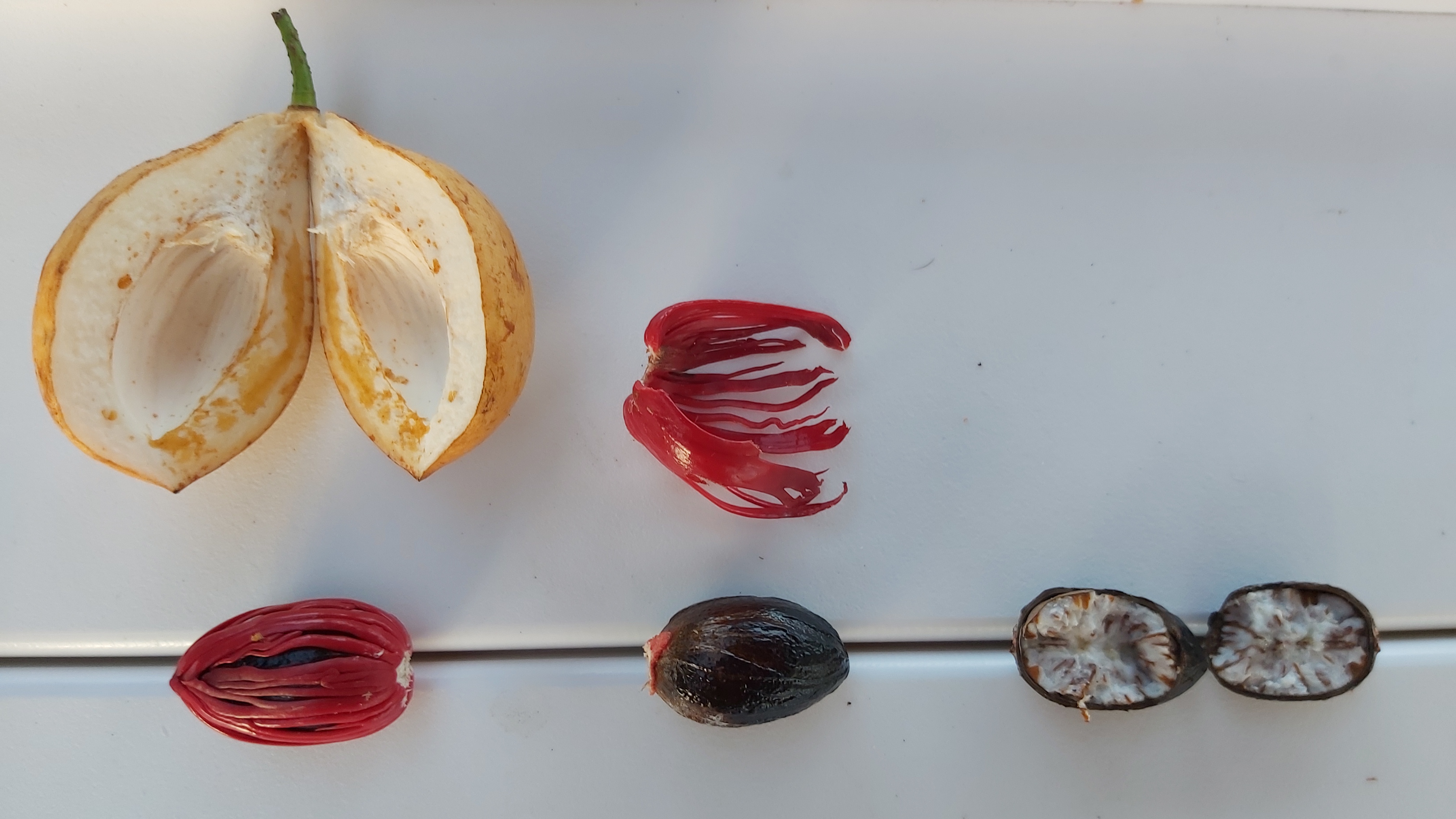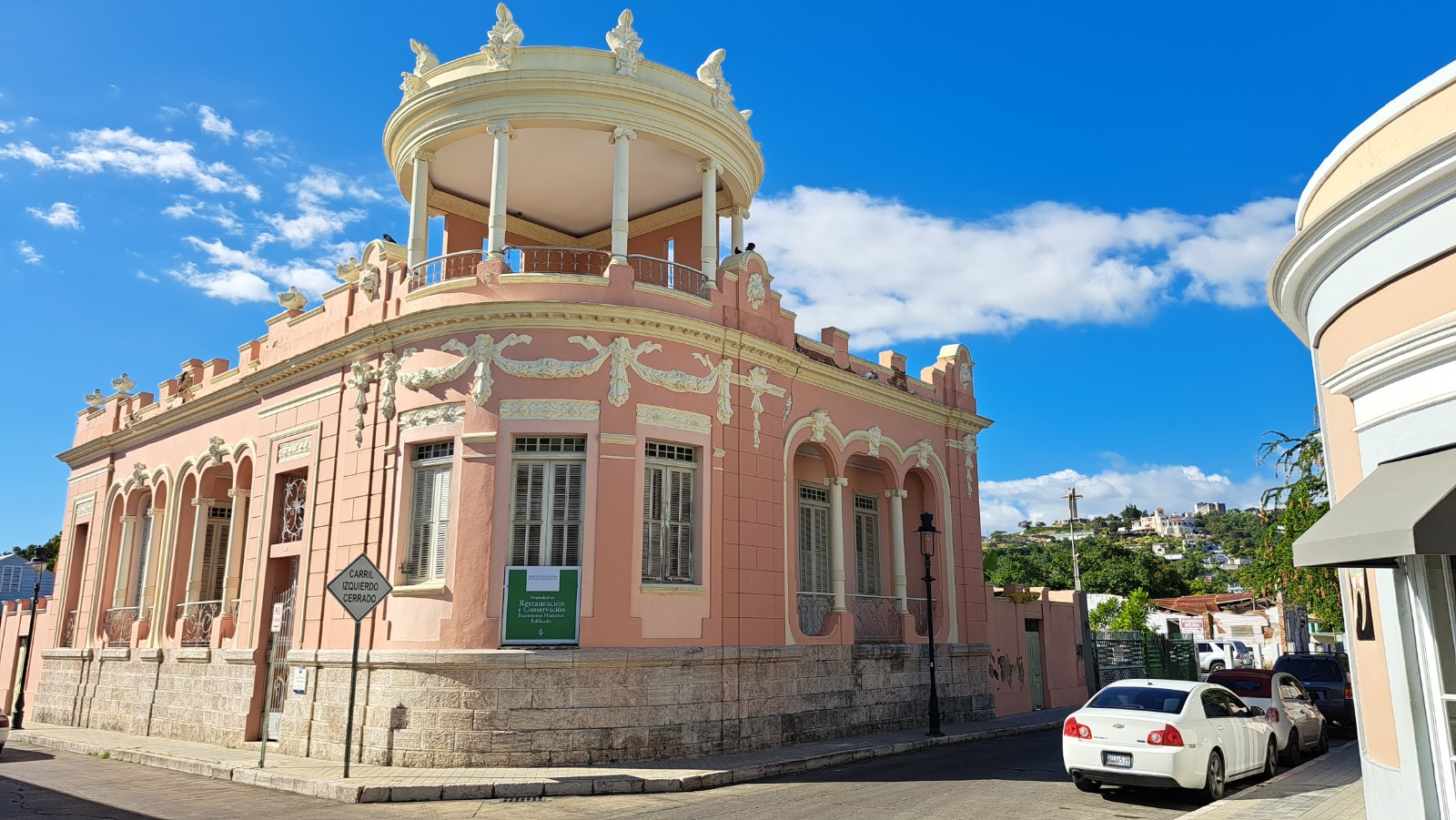November 21. What a great day Monday was for us and our friends Susan and Rachel: a tour of the island! Before Amoy arrived with his air conditioned minibus, Frank and I dropped off a propane tank for refill and headed towards the local European butcher for a couple of pains au chocolat - yes Frederique and Gilles also sell patisseries and baguettes. The CLOSED sign at the door reminded us that they are closed on Monday. No problem, the tiki bar opens at 7:30 for breakfast and also sells fresh baking goods.
Amoy, Susan and Rachel were all in time for our 9:00 rendez-vous. Let's go! We started with a rum distillery. Amoy suggested that we only sample their rums, a tour of the facility will be a lot more interesting at the second rum distillery later today. For USD 5, we each sampled 6 rums from spicy to fruity (mojito, hibiscus, lime) to creamy. They even had a Christmas rum (sold in November-December only) with a touch of cinnamon and pomegranate. There were many good ones, it was hard to choose. We decided on a creamy chocolate one for morning coffees. We intended to buy a more serious one at the second distillery.
Amoy had generously brought with him a cooler full of water bottles, beers and wines. What a nice man! Out come the water bottles; it's going to be a hot day.
Next, swimming under waterfalls. We noticed during our all-day tour that the Southern section of Grenada, where our boat is, is the only section that is relatively flat. The rest of the island is mountainous. So to get to those falls, we drove through serpentine and narrow streets - always holding on to bars on walls and seats to stay on our seats - leading up to Concord Falls. How refreshing! Fresh and cool water. Rocky shores and rivers but the bottom of the falls had a 20-foot deep pool. Aaaaah!
Along the way to our various destinations, Amoy took the time to give us a bit of the island history and explain some of the significant buildings. Did you know that the prison has one of the best views of St. George's and beaches? Huh! We can easily imagine the grandiose sugar plantations when we saw old and abandoned statety homes. Some of the houses and buildings were just relics now, destroyed by Hurricane Ivan in 2004. Grenada is outside the hurricane zone; I'm guessing, like sheeps, there's always a stray that doesn't follow the known path. LOL! Amoy also stopped many times to allow us to take pictures of trees and plants along the way: cinnamon tree, nutmeg tree with fruits ready for the picking, mandarin tree full of fruits, mango tree, monkeys.
A bit of history. The Caribs were the first documented people to habitate this island. Fierce and determined, they protected their island from European invasions until the French came in 1649; even though Christopher Columbus had discovered it in 1498 during his third voyage. The French kept residence and developed rum from the sugar cane (called rhum agricole) until 1763 when the British acquired Grenada through the Treaty of Paris and played the rooster of the coop for the next 200 years or so. From Wiki: <span;>Independence was granted on 7 February 1974 under the leadership of Eric Gairy, who became the first prime minister of Grenada of the sovereign state. The new country became a member of the Commonwealth of Nations, with Queen Elizabeth II as head of state.
Now refreshed from swimming, we headed towards a chocolate co-op and maker. The majority ownership is to a co-operative of coco farmers, who bring their crops to a few points of sale over the island. All crops are then transported to this co-op for processing. Coco pods look like small footballs. The coco beans - white and slimey - are stacked up inside. The extracted coco beans are fermented under banana leaves then dried naturally for a week on mesh racks outside. After sorting them by size and removing the nibs (pieces of beans), they are crushed by big steel cylinders. From that point, the process varies depending on the intended end product: powder, chocolate bars or nibs, butter, etc. At the store, we bought 6 bars (some at 75%, others with ginger, others with nutmeg).
Talking about nutmeg, the blog photo is a nutmeg fruit. It splits in two still attached to the branch - a sign to tell us it's ready for picking. Inside the fruit, the nut is covered by a bright red mesh. The nutmeg spice is inside the black nut whick we will air dry before we crack it to remove the spice.
Lunchtime is enjoyed at the Petite Anse Hotel, by the island's North shore, with a background view of the nearby islands (Ronde, Diamond, Cariacou), savouring a fresh tuna roti with a cold beer. The roti is a stapled item on menus. The roti flatbread looks like a cross between a French crepe (smaller) and a tortilla (thinner). It wraps a variety of ingredients, usually a protein (fish, chicken) and starch (potatoes, chickpeas) - could also be vegetarian - mixed with asian flavors. Served with a salad. Yummy!
We rushed out of the restaurant to drive to the second rum distillery before it closed at 16:00 - River Antoine Estate Rum Distillery. This distillery is meant to also be a museum - success. Wow! Every step of the process is done manually by a total of 90 employees. As mentioned earlier, this rhum agricole is made directly from sugar canes instead of the usual molasses. The estate's crop is mostly sugar cane obviously, but also of banana trees. As I grew up on a farm, I lkknew that all crops need to rotate fields every few years in order to replenish the soil of its much needed nutrients. Therefore, this estate grow banana trees between sugar cane crops.
A huge wheel propelled by channeled water provides energy to a cutter and crusher. The crushed cane called "bagasse" is then used to fuel fires to heat the cane juice. Again, all these steps are manned and supervised by people - no electronics nor computers. Like maple syrup, the cane juice is cooked in a few vats, each vat is hotter and the juice denser. The fermentation is done naturally over 8 days. The harvesting and condensation of alcoholic steam (again fermented juice boiled over bagasse-fired ovens) are the last phases of the process before bottling. This distillery only produce two rums: one of 75% alcohol and the other of 69%. The reason for the 69% (distilled water added to the 75% rum) is because tourists can't pass customs with alcohol higher than 70%. Interesting, isn't it? After this eye-opening and enjoyable tour, the tasting was a bit of a disappointment. Frank choked on his shot of the 69%; he had difficulty getting his breath back. You know how it is when what you swallow something which feels like it went through the wrong pipe? The 75% was way too strong. I just tasted alcohol not much else. Oh well, it was still a very worthwhile and interesting last point of interest.
Driving from the North end of the island to our marina at the South end took an hour of twisted, narrow streets, up and down mountain flanks. In the bus, I felt like I was in a roller-coaster. We ended our tour tired and happy - the perfect day. Thank you, Amoy!



